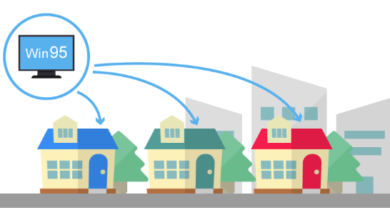How to avoid overprotecting children: nine essential keys

Do we overprotect our children? What does it mean to overprotect? What is the difference between protecting and overprotecting?
How can we avoid these overprotective behaviors? Can we educate by stimulating the autonomy of our children, while accompanying them in their process and not being excessively invasive?
We talk about all this, through nine keys that can help you educate avoiding overprotection.
What is overprotection?
What does it mean to overprotect children and what type of parents tend to manifest this behavior more? As its name suggests, overprotecting consists of an excess of protection towards children.
It implies, for example, constantly preventing them from harming themselves, prohibiting them from things they could do alone, giving in to everything, doing everything to them, controlling them excessively, clipping their wings, limiting them, taking care of things that really depend on them…
Generally, overprotection appears more in first-time parents , in parents of children with disabilities and in parents who tend to perfectionism, with an anxious or fearful tendency and/or who have a great need for control.
In the cases of new parents, for example, overprotection is often due to a need, or even anxiety, to create the “ideal” environment for children, and is also governed by low tolerance for error (perfectionism already mentioned) .
How to avoid overprotecting children
But, how to avoid overprotection in children? We give you nine key ideas for it:
Difference between caring and overprotecting
When it comes to avoiding overprotecting our children, it is important that we start with something more theoretical; differentiate the act of caring and protecting from overprotection .
We take care when we accompany and support, but we overprotect, when we impose, when we give children everything done, when we do not give them room for manoeuvre.
And it is that we can protect and care with common sense , but without letting ourselves be carried away by the fears that are often hidden under overprotection (and that we will get to know a little later).
Find the balance between protection and autonomy
Finding the middle point, the balance, is not an easy task, but when it is achieved, it is very beneficial for children. But the middle ground between what?
Between the protection and the autonomy of the little ones. It is about trying to care for, protect and accompany from the desire to promote autonomy in children.
That is, giving them their space, their place, their room for manoeuvre… Thus, it is about teaching, showing and accompanying, and not so much about instilling or pressuring. Accompany our children on the flight without clipping their wings .
Ask for their opinion
It is important to ask for the opinion of our children, so that they are part of their process of change and growth. Take them into account and suggest things , and not so much impose our ideas or beliefs.
Thus, asking for their opinion is a way to get away from that overprotection that can harm them so much, in some cases.
Keep that in mind
Linked to the previous point, it is important not only to ask our children for their opinion, but also, and logically, to listen to it, take it into account, put it into practice…
So that they feel part of their process of autonomy, learning and growth.
Encourage him to play with other children
It is very important to respect the rhythms of our children, their spaces, their character, needs… And that also applies to the game . However, if we detect that our son wants to play with other children, but that he does not know very well how to approach them, that he is shy , we can accompany him, encourage him, teach him…
It is about promoting their autonomy in other areas (away from adults), such as social relations and/or play, which constitutes a further step towards non-overprotection.
listen to your fears
Many times, overprotection stems from their own fears as parents ; Fear of our son hurting himself, of something happening to him, of losing control of the situation, of suffering…
They are totally normal fears, and therefore, we must listen to them, give them their space, understand them. And it is that, paradoxically, fear must be received in order for it to go away .
Understanding your fears is one more step to avoid overprotection in your children, because from awareness and calm we can adjust our behavior and education more realistically to the needs of our child, and not so much to ours.
Teach him to tolerate frustration
Learning to tolerate frustration , the feeling of failure, is another step towards autonomy, which we can teach our children. Also, we are teaching them that sometimes, you can’t have it all (or not without effort).
On the other hand, through this teaching, we are giving them tools to learn to take care of their emotions , and above all, to manage them.
In this way, if your child makes a mistake, is wrong or does not achieve something he wanted, it is important that he is able to go through those unpleasant emotions that the situation generates.
And that he can do it from conscious listening and self -control , and not from impulsiveness or his own emotion (anger), which is what often leads him to have tantrums , to scream, etc.
Give him responsibility
Responsibilities grant autonomy; for this reason, you see little by little giving him responsibilities that he can assume according to his age, abilities and evolutionary moment. In this way, giving responsibilities implies cultivating their autonomy , and everything that has to do with autonomy moves away from overprotection.
Small examples that you can apply; opt for your child to prepare his backpack, make his bed, organize his agenda and his homework , keep his room tidy, set and clear the table, etc.
Set limits (clear and consistent)
Another idea that can help you not to overprotect your children is setting limits . It is also important that these limits are clear, understandable to them, consistent and fair (ie proportionate, “logical”).
On the other hand, he thinks that the “no”, or the conditional “yes”, are ways of showing our son that we love him, and that they also act as “guides”, indicating the path to follow many times (where yes , why not…).
And you, do you think you overprotect your children? Or do you stimulate their autonomy? Do you think that overprotecting favors them, or just the opposite?
Be that as it may, the ideas discussed can help you work on some aspects of the development that you want in your child, and that you can apply in your day to day life.



